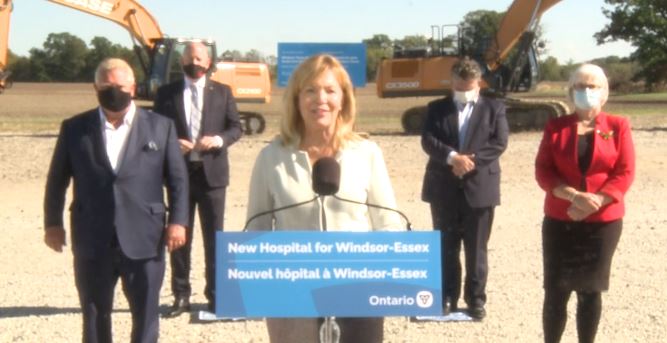Elections in Ontario, we will have a long election campaign

TORONTO – Let’s fasten our seat belts and get ready: in Ontario we will have to see a very long election campaign. Which, incidentally, has already begun a few weeks ago, from September 21 to be precise, the day after the federal elections. Pounding commercials on TV, radio, on the Internet and on social media, announcements on unlikely investments, promises, pacts with voters, plans for the future, slogans, all seasoned with accusations, controversies and poisons: June 2, 2022 is a date still far away, but already in recent weeks we have had a taste of what, willy-nilly, is waiting for us.
Prime Minister Doug Ford’s Progressive Conservative has already set its war machine in motion to repeat the success of the 2018 vote.
Every day three to five ministers are sent to the four corners of the province to announce projects and investments on a local basis: in most cases it is a simple photo opp, an event organized to have space in the media, where in reality nothing new is announced. An example of this mechanism came on Monday, when Ford – accompanied by Health Minister Christine Elliott (in the pics) – reached Windsor to announce “the provincial government’s renewed commitment to the construction of a new hospital”. When will the first stone be laid? We still don’t know. When will construction be completed? There are no official dates. When will the hospital become operational? Perhaps.
But the prime minister’s conference on Monday highlighted another extremely significant element: in the elections those who are able, during the electoral campaign, to dictate the timing and themes of the political debate are advantaged.
An example, classic trite and trite, consists of a model put in place by Ford himself: first use the classic shot that speaks to the belly of the voters, arouse the reaction of the oppositions and then clarify their position. The result: the media talk about you for three to four days, nothing changes concretely but the electoral debate remains in your hands.
The alleged gaffe on immigrants – in our view calculated and weighed up and not the result of chance – is an example of this strategy. First Ford declares that in Ontario – and here we paraphrase – there is no room for immigrants who want to come here to collect unemployment benefits, so he lets the reactions of the oppositions be unleashed, then he specifies how in reality Ontario needs new immigrants because the labor market, in certain employment sectors, fails to have sufficient labor.
This strategy, as simplistic as it is tremendously effective, has already been used by Ford in 2018, so well that more than three years later in the collective imagination we still remember his attacks on the then premier Kathleen Wynne, which entered our heads and which characterized the overall historical judgment on the former liberal leader: Wynne is “the prime minister who increased the electricity bills”, and not the one that introduced the minimum wage, free medicines for minors or full-time nurseries, all measures that bear his signature.
For now, both NDP leader Andrea Horwath and liberal leader Steven Del Duca are falling fully into this mechanism, in this media meat grinder where the helm is firmly in Ford’s hands.
There is an antidote capable of curbing this mechanism: the presentation of a serious and alternative vision on the future of our province, accompanied by a serious and concrete reform plan of health, school and the LTC sector. For now, all this is hidden and to gain is once again in office premier.



